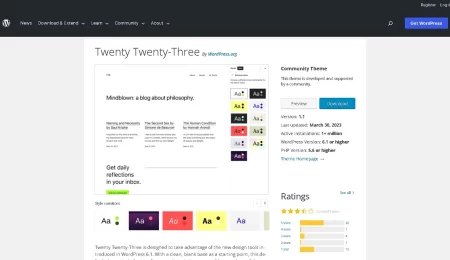Make Business Online: Make your business presence online
Make Business Online: In today’s digital age, having an online presence is crucial for any business. It’s like having a storefront on the busiest street in town, but instead of foot traffic, you have access to a global audience. But how do you establish and maintain this presence effectively? Let’s dive into the strategies that can help you make your business presence felt online.
Building a Professional Website
A professional website is the cornerstone of your online presence. It serves as your digital storefront and provides potential customers with information about your products or services.
Choosing a Domain Name
Your domain name is your address on the web. It should be easy to remember, relevant to your business, and ideally include a keyword related to your industry. Avoid using numbers and hyphens as they can be confusing.
Selecting a Reliable Web Hosting Service
A good web hosting service ensures your website is always accessible. Look for hosting providers that offer high uptime, fast loading speeds, and excellent customer support.
Designing a User-Friendly Website
The design of your website should be intuitive and user-friendly. A well-designed website can significantly impact your visitors’ experience.
Importance of Responsive Design
With the increasing use of mobile devices, having a responsive design is crucial. This means your website should look and function well on all devices, from desktops to smartphones.
Essential Pages to Include
Ensure your website has essential pages such as Home, About Us, Services/Products, Contact, and a Blog. These pages provide visitors with all the information they need about your business.
Search Engine Optimization (SEO)
SEO is vital for increasing your website’s visibility on search engines like Google. It involves both on-page and off-page strategies to improve your site’s ranking.
On-Page SEO Techniques
On-page SEO involves optimizing individual pages on your website to rank higher in search results.
Keyword Research and Implementation
Identify relevant keywords that potential customers might use to find your products or services. Use these keywords naturally in your content, titles, and meta descriptions.
Meta Tags Optimization
Meta tags, including the title tag and meta description, should be optimized with your target keywords. They help search engines understand the content of your page and improve click-through rates.
Quality Content Creation
Creating high-quality, informative content is key to engaging your audience and improving your SEO. Ensure your content is original, valuable, and relevant to your audience.
Off-Page SEO Strategies
Off-page SEO involves activities outside your website that can improve its ranking.
Backlink Building
Building high-quality backlinks from reputable websites can boost your site’s authority and search engine ranking. Focus on earning links from industry-related sites.
Social Media Signals
Active engagement on social media platforms can also positively impact your SEO. Share your content on social media and encourage others to do the same.
Utilizing Social Media Platforms
Social media platforms are powerful tools for building your online presence. They allow you to connect with your audience, share content, and promote your business.
Identifying the Right Platforms
Not all social media platforms are created equal. Identify where your target audience spends their time and focus your efforts there. For example, Instagram and Facebook are great for visual content, while LinkedIn is ideal for B2B businesses.
Creating Engaging Content
Content is king on social media. Creating engaging, shareable content can help you reach a wider audience.
Visual Content
Posts with images and videos tend to get more engagement than text-only posts. Use high-quality visuals to capture your audience’s attention.
Interactive Posts
Interactive posts, such as polls and quizzes, can boost engagement and make your content more enjoyable for your audience.
Regular Posting and Interaction
Consistency is key on social media. Regular posting keeps your audience engaged and informed about your business.
Scheduling Posts
Use scheduling tools to plan and automate your posts. This ensures you maintain a consistent presence without overwhelming yourself.
Engaging with Followers
Respond to comments and messages promptly. Engaging with your audience builds trust and fosters a sense of community.
Content Marketing
Content marketing involves creating and sharing valuable content to attract and retain customers.
Blogging
A blog is an excellent way to share your expertise and provide valuable information to your audience.
Choosing Relevant Topics
Write about topics that are relevant to your audience and industry. Answer common questions and provide solutions to their problems.
Consistency in Posting
Consistency is crucial in blogging. Establish a regular posting schedule to keep your audience coming back for more.
Video Marketing
Videos are a powerful way to engage your audience and convey information quickly.
Creating High-Quality Videos
Invest in good equipment and editing software to create high-quality videos. Your videos should be informative, engaging, and professionally produced.
Utilizing YouTube and Other Platforms
YouTube is the second largest search engine after Google. Utilize it to reach a larger audience. Share your videos on other platforms like Facebook and Instagram as well.
Email Marketing
Email marketing is a direct way to communicate with your audience. It allows you to send personalized messages to your subscribers.
Building an Email List
Build your email list by offering valuable content or incentives, such as eBooks or discounts, in exchange for email sign-ups.
Crafting Effective Newsletters
Newsletters should be informative and engaging. Use them to share updates, promotions, and valuable content with your subscribers.
Personalization and Segmentation
Personalize your emails by addressing subscribers by their names and segmenting your list based on their interests and behaviors.
Online Advertising
Online advertising can help you reach a wider audience and drive traffic to your website.
Pay-Per-Click (PPC) Advertising
PPC advertising, such as Google Ads, allows you to pay for clicks on your ads. This can be an effective way to drive targeted traffic to your website.
Social Media Ads
Social media platforms offer advertising options that allow you to target specific demographics and interests.
Retargeting Ads
Retargeting ads show your ads to people who have previously visited your website. This can help you re-engage potential customers and encourage them to return.
Analytics and Monitoring
Monitoring your online presence is crucial for understanding what works and what doesn’t.
Using Google Analytics
Google Analytics provides valuable insights into your website’s performance, including traffic sources, user behavior, and conversion rates.
Monitoring Social Media Metrics
Use tools like Facebook Insights and Twitter Analytics to track your social media performance. Monitor metrics such as engagement, reach, and follower growth.
Adapting Strategies Based on Data
Use the data you collect to adapt and improve your online presence strategies. Continuously test and refine your approaches to achieve better results.
Building a strong online presence takes time and effort, but the rewards are well worth it. By following the strategies outlined in this article, you can establish a robust online presence that attracts and retains customers. Whether it’s through a professional website, effective SEO, engaging social media content, or targeted email marketing, each step you take will bring you closer to achieving your online business goals. Start today, be consistent, and watch your business thrive in the digital world!




Leave a Comment